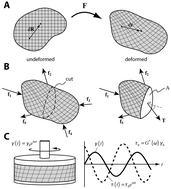Let's push things forward: disruptive technologies and the mechanics of tissue assembly
Abstract
Although many of the molecular mechanisms that regulate tissue

Maintenance work is planned for Wednesday 1st May 2024 from 9:00am to 11:00am (BST).
During this time, the performance of our website may be affected - searches may run slowly and some pages may be temporarily unavailable. If this happens, please try refreshing your web browser or try waiting two to three minutes before trying again.
We apologise for any inconvenience this might cause and thank you for your patience.
* Corresponding authors
a Department of Chemical & Biological Engineering, Princeton University, Princeton, NJ 08544, USA
b
Department of Molecular Biology, Princeton University, 303 Hoyt Laboratory, William Street, Princeton, NJ 08544, USA
E-mail:
celesten@princeton.edu
Fax: +1 609-258-1247
Tel: +1 609-258-8851
Although many of the molecular mechanisms that regulate tissue

 Please wait while we load your content...
Something went wrong. Try again?
Please wait while we load your content...
Something went wrong. Try again?
 Fetching data from CrossRef.
Fetching data from CrossRef.
This may take some time to load.
Loading related content
